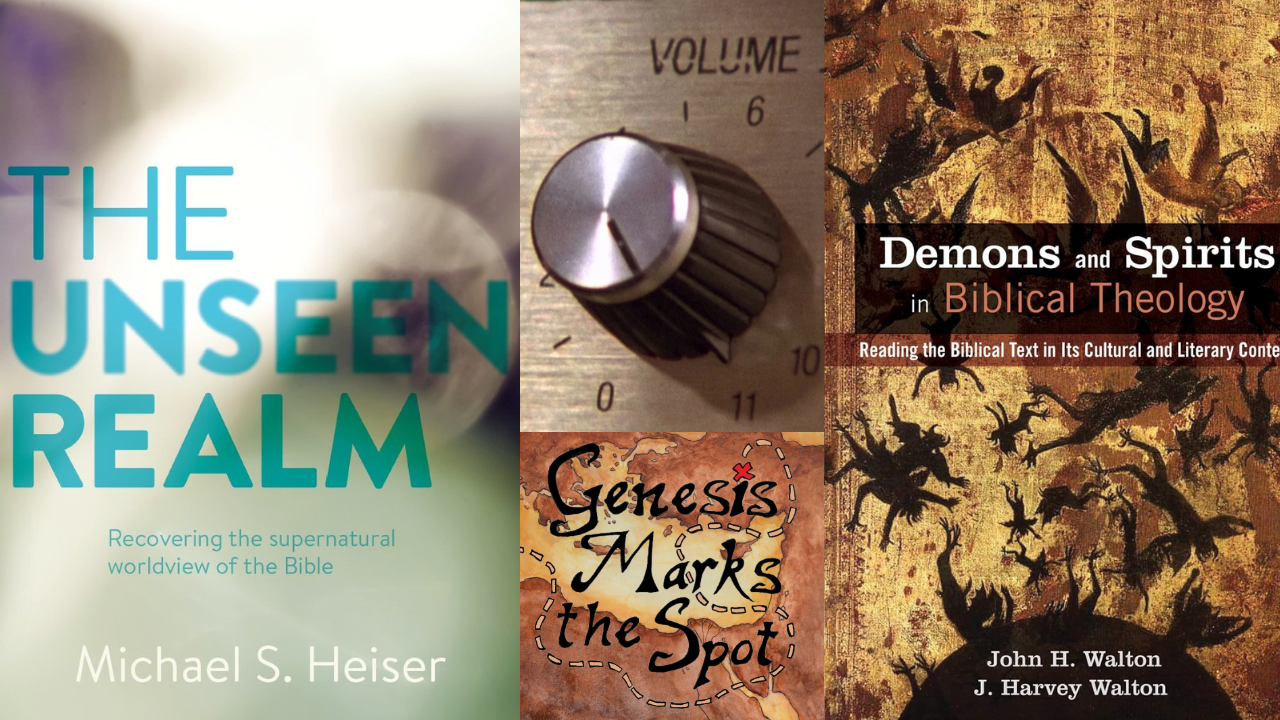What Does the Bible Affirm? Turning Up the Dial on Walton’s Hermeneutic

Being in the space I’m in—biblical theology podcasting, moderating the DCW (Divine Council Worldview FB group), and spending time in the strange crossroads of hermeneutics, canon, and spiritual imagination—I see some patterns.
One pattern I’ve noticed: people often find a teacher or scholar whose work resonates deeply with them—and understandably so. That voice has helped them make sense of Scripture, deepened their love for Christ, maybe even pulled them out of confusion or disillusionment and into active, lived-out faith. And so when that scholar is critiqued, questioned, or even just gently stretched, it can feel like a personal affront.
That’s totally human. Loving good teachers is not cultish; it’s called being grateful. But biblical theology is about ongoing formation, not static loyalty. Good scholars want us to think with them, not just repeat them. At some point, our responsibility becomes testing the ideas themselves.
So here we are, looking at the supposed divide between Michael Heiser and John Walton. Some see it as not a big deal and they love both scholars. Some are a bit testier than that…
Referent, Affirmation, and “Lift and Plop” Tendencies
John Walton (alongside J. Harvey Walton) offers what they call a “referent and affirmation” model for interpreting Scripture. Defined in short:
- Referent = what the text refers to in its cultural and literary context (cosmic geography, ancient metaphors, or spiritual frameworks, for example).
- Affirmation = what the text actually teaches or endorses theologically.
The Waltons are trying to protect the authority of Scripture by saying something like: “Just because the Bible mentions something doesn’t mean it affirms it as real or binding.” The good thing about this, if you ask me, is that it’s a helpful way to guard against misreading ancient imagery as modern metaphysics (which is another pattern I’ve noticed). You don’t want to build a cosmology out of Job 26:11 (“the pillars of the heavens tremble”) or treat 1 Samuel 28’s encounter with the medium of Endor as a how-to guide. That…should be obvious?
But I’ve seen it—I’ve seen the tendency to create the D&D Monster & Deities Dungeon Guide out of the DCW framework.
That, in a nutshell, is what I think Walton is concerned about, honestly, and I’m with him there. I think it’s a potential problem. No, the DCW does NOT mean that God can actually be defeated, nor that Baal was a legitimate contender for the throne, etc. I mean, that’s the polemic of the Bible, for crying out loud. Properly understood, the DCW tells us a rightly-ordered view of the spiritual realm.
Now…did Dr. Heiser do things like the “lift and plop” method of interpretation where we are tempted to catalog all deities and religious beliefs, or do something like lift the spiritual beings from the OT and plop them into America today? Decidedly not. But some of the people who read Dr. Heiser’s work kinda do, not gonna lie.
But when it comes to Walton’s work in specific….what happens when the method is too minimalist?
Minimalist vs. Maximalist: The Hermeneutical Divide
Part of my current explorations also digs into a key tension in biblical interpretation, which is a wider conversation than just the interaction or tension between two scholars:
- A minimalist approach might ask, “What’s the bare minimum we can responsibly affirm from the text?”
- A maximalist approach might ask, “What theological weight can we responsibly draw from the text in light of the whole canon?”
Both have strengths. Both have dangers. Minimalism protects against eisegesis; maximalism protects the coherence of the canon. The challenge is: what happens when your method only lets you say what the ancient author could’ve intended—but the Bible’s theology doesn’t stop there?
Heiser vs. Walton: Different Questions, Different Outcomes
This brings us to a fascinating distinction between Michael Heiser and John Walton. Both are contextual scholars. Both take the ancient world seriously. But they are at heart asking different questions:
- Heiser often asked: “What can the text sustain?”
→ What interpretations are possible? His work emphasizes the text as primary and also, sure, supernatural worldview assumed across the canon. He sees spiritual conflict not just as a cultural framework, but as a real, enduring reality affirmed and extended in Scripture. But he was also just interested in bringing out the possibilities that the text could hold…that’s one thing I loved about his work. - Walton is asking: “What is the text teaching?”
→ What does it affirm? His work emphasizes divine accommodation and wisdom literature. He’s cautious—yeah, okay…sometimes too cautious—about affirming anything that might just be an ancient referent. Walton is less interested to explore all the interpretive options and more interested in really finding out the exactitude of what the Bible is teaching.
This difference in questions creates a gap between them—not because one is reckless and the other careful, but simply because they’re trying to protect and do different things. Heiser was protecting spiritual coherence and scholarly exploration; Walton is protecting textual fidelity.
Toward a Fuller Toolkit
So what do we do with this?
I suggest that we don’t abandon the Waltons’ model—but we do need to stretch it. Here are some ways we might move forward:
- Honor historical context (referents matter),
- Ask what’s affirmed (but not only in the immediate context),
- Read with the canon in view (what’s trajectory-confirmed becomes theologically real).
In other words, we can take their model and “turn it up to 11.” That doesn’t mean being louder or looser—it means asking, What happens when we apply this with full theological weight?
Turn it to 11
This episode is a conversation. I'm inviting you to appreciate the value of referent/affirmation, acknowledge its weaknesses, and lean into a more theological reading that lets the canon do its full work.
Whether you’re a Walton fan, a Heiser cultist (ahem! …yes I’m teasing!), or somewhere in between, I hope this helps you think more carefully—and more canonically—about how we read Scripture.
Listen now: This One Goes to 11: Rethinking Referent and Affirmation - Episode 137









